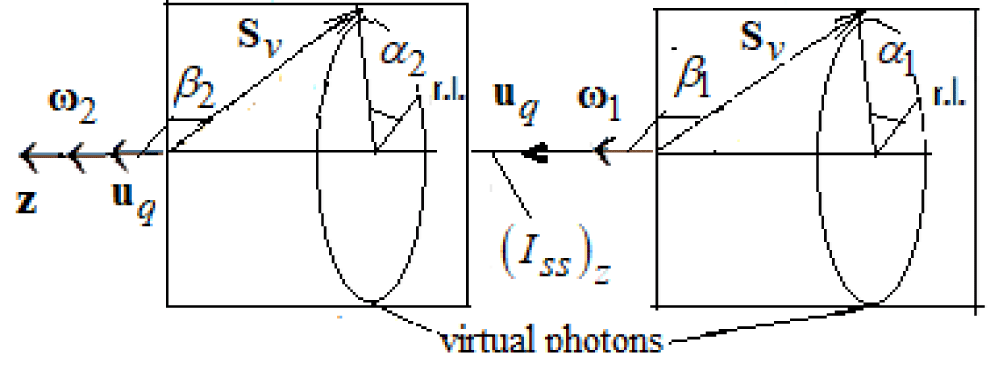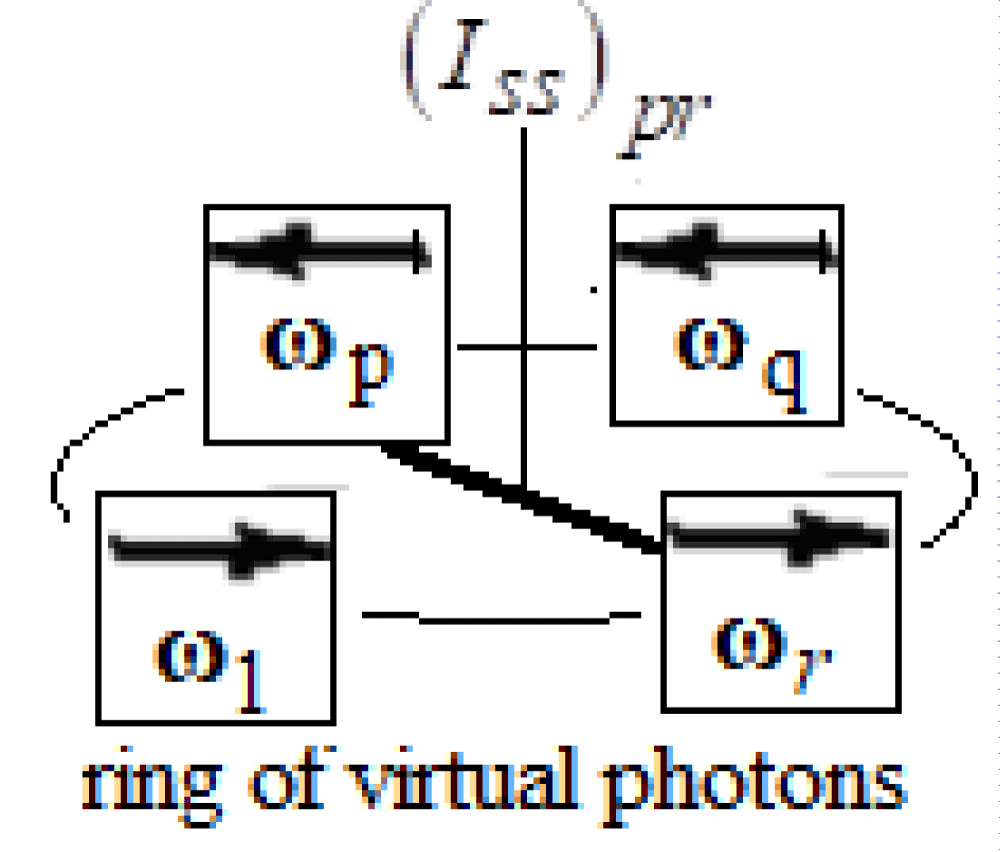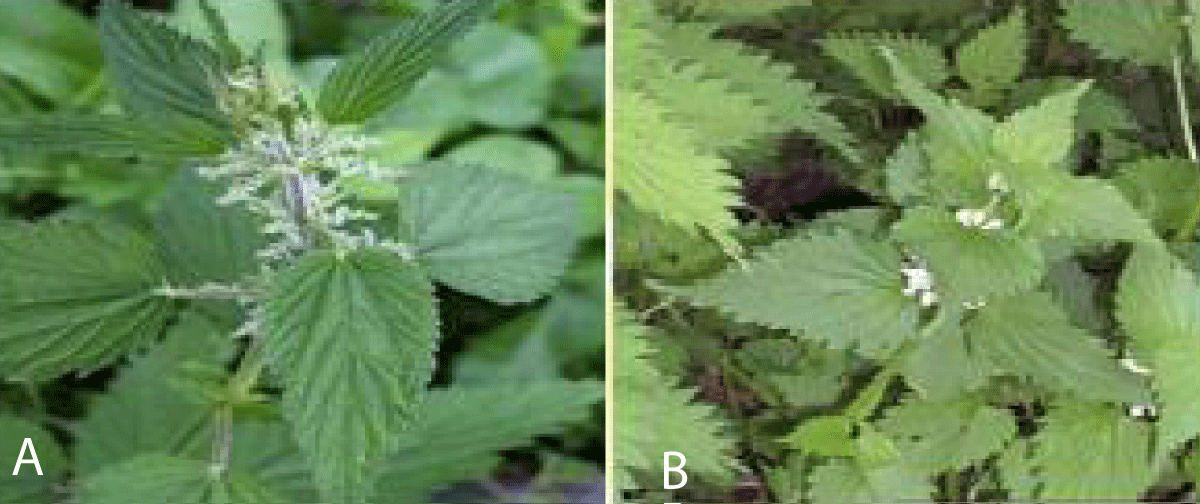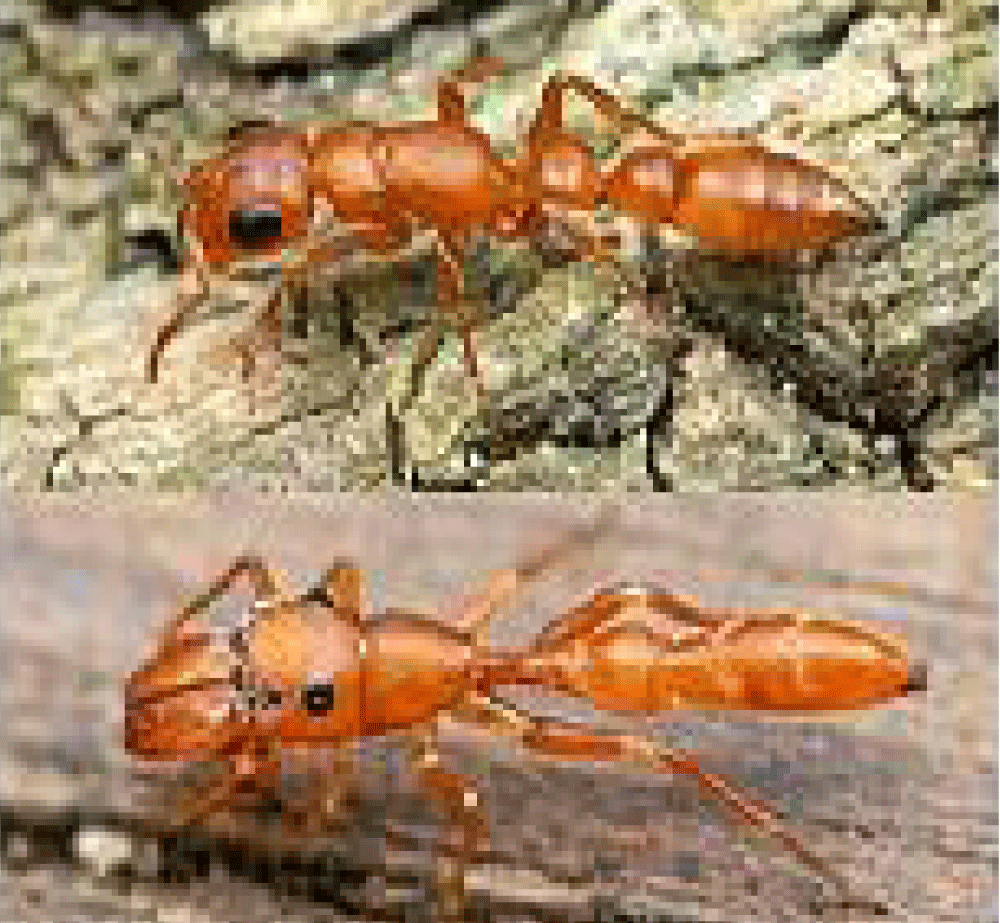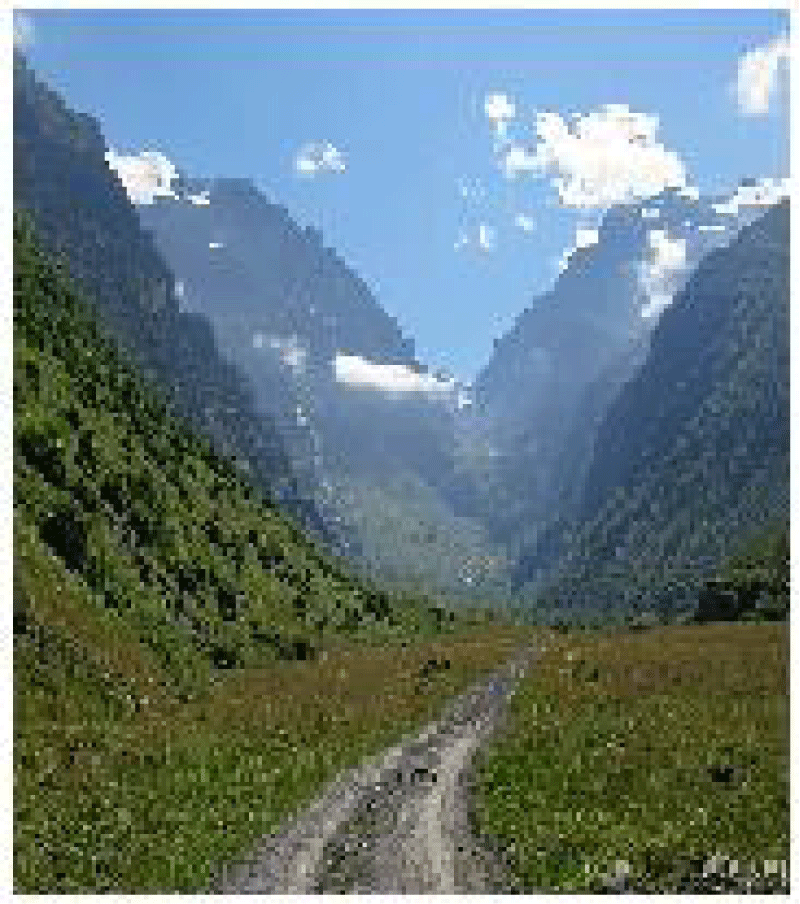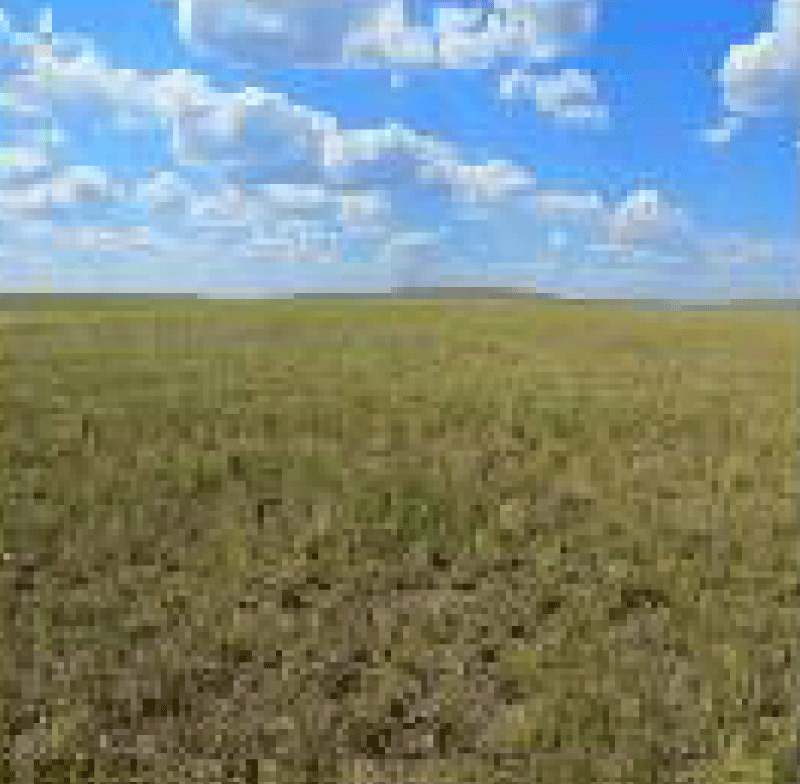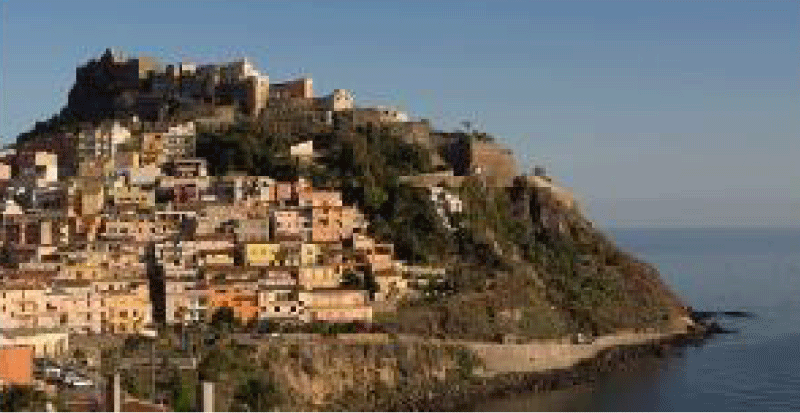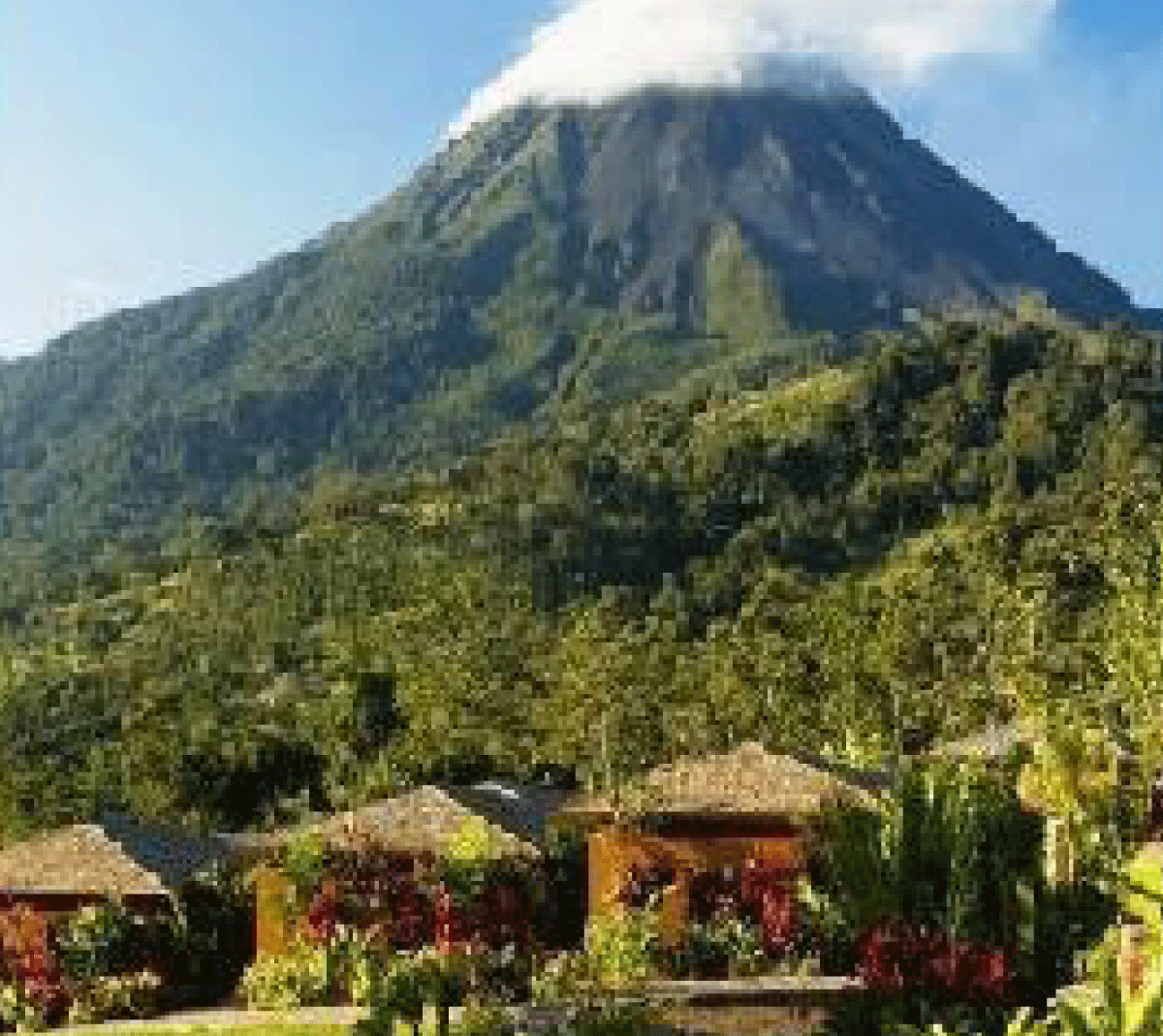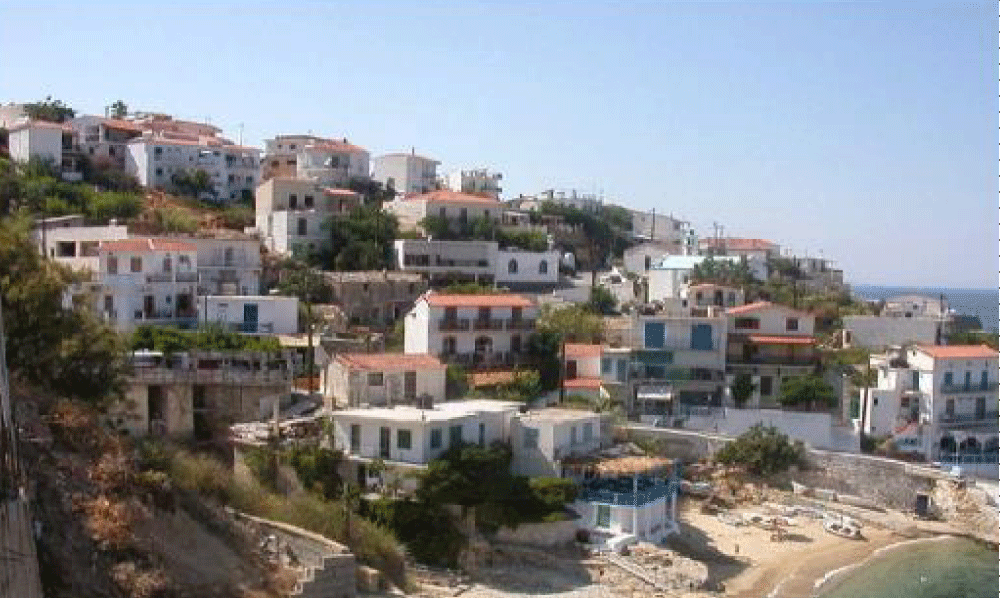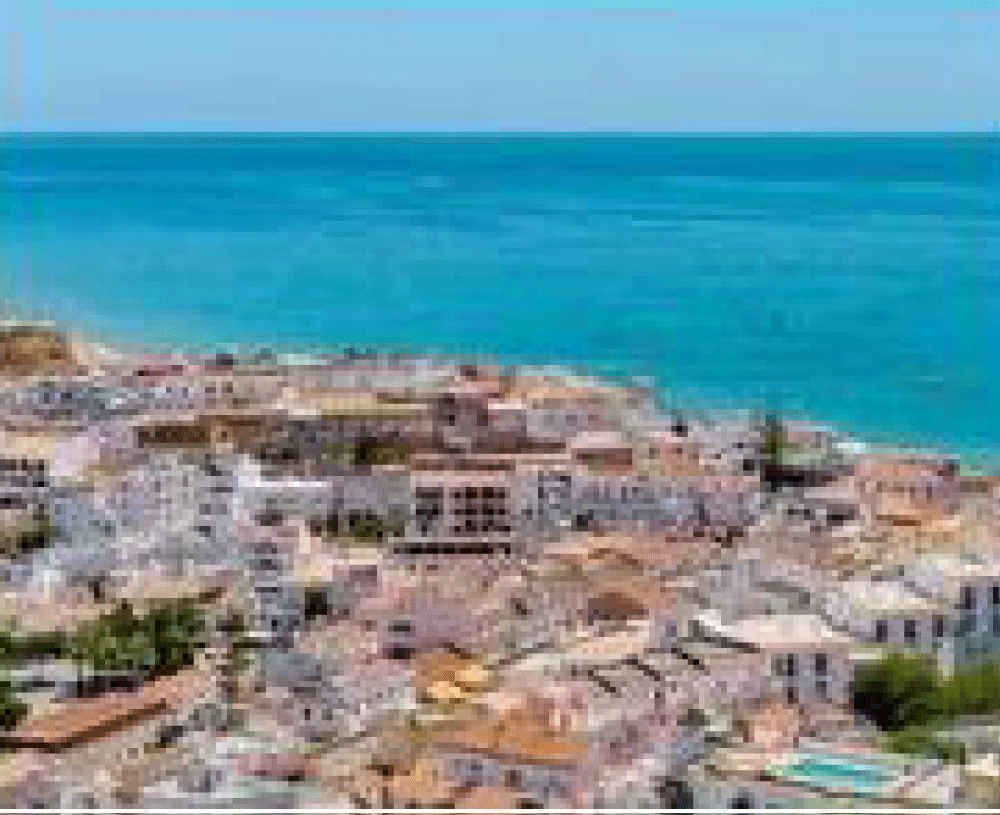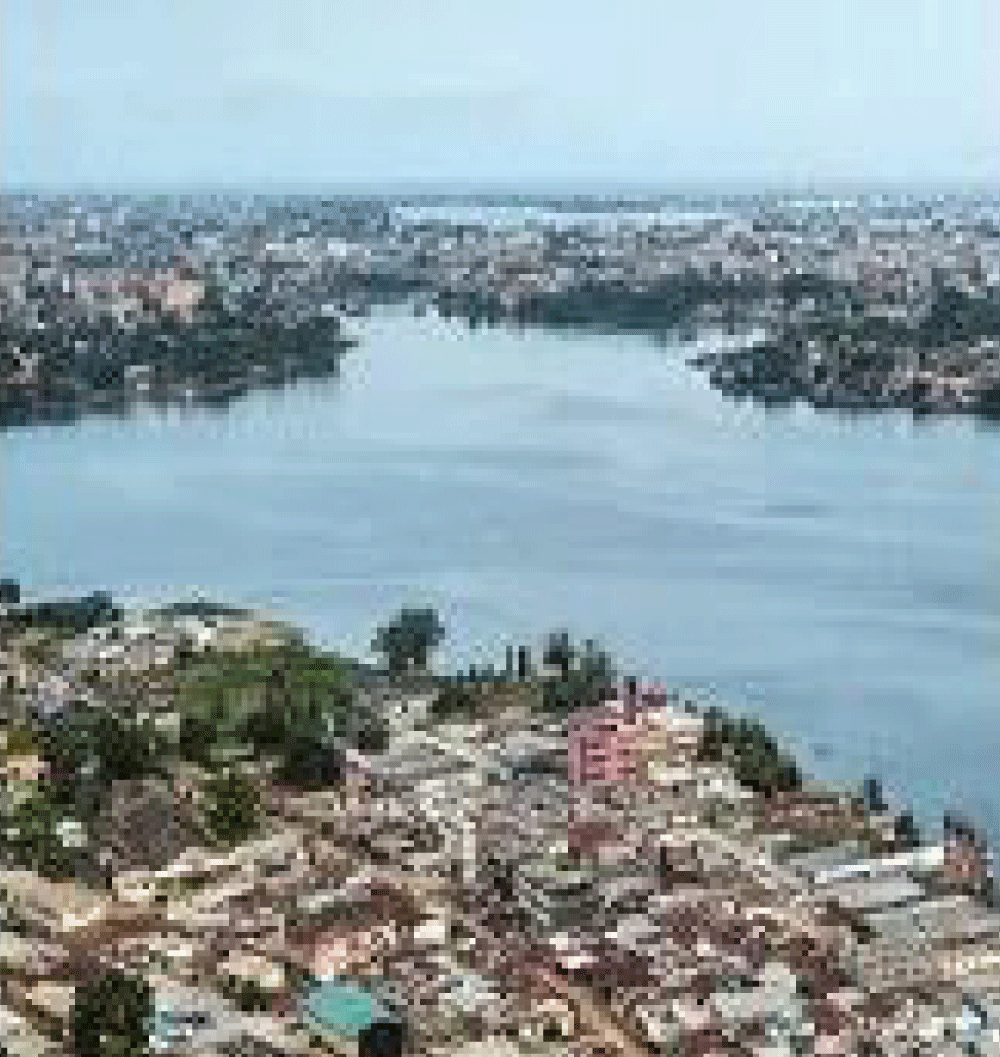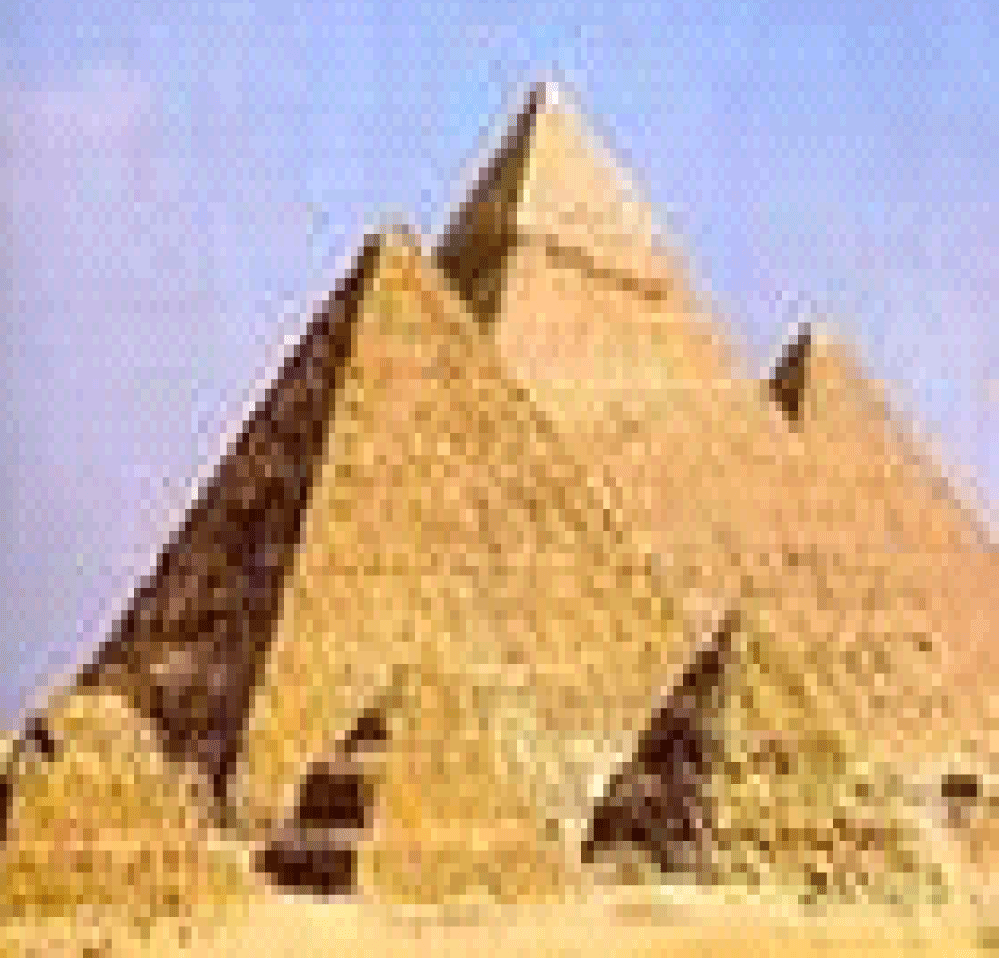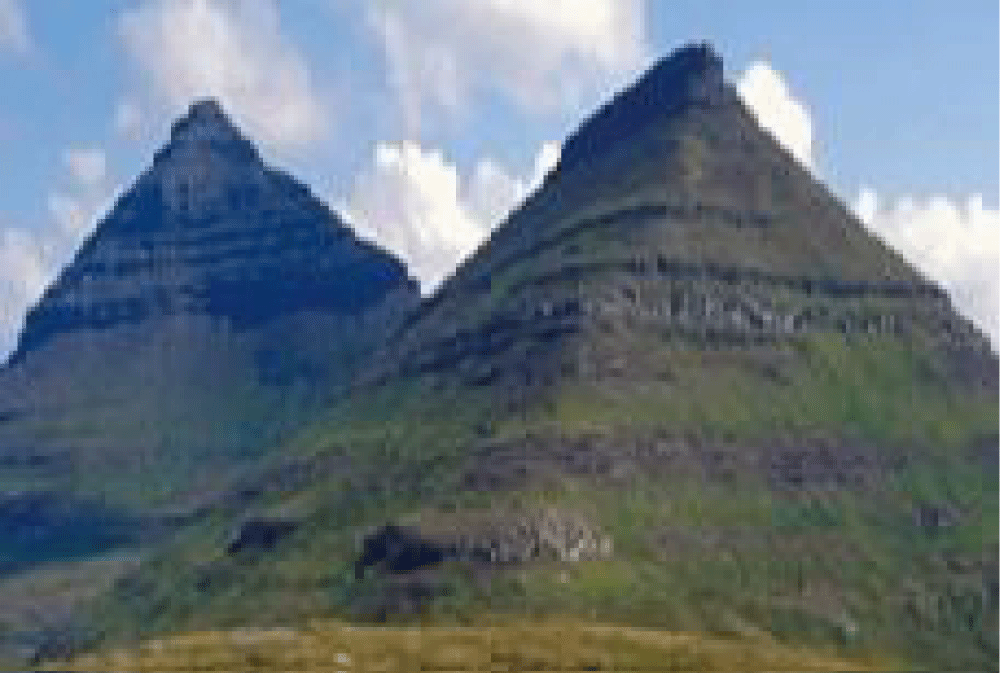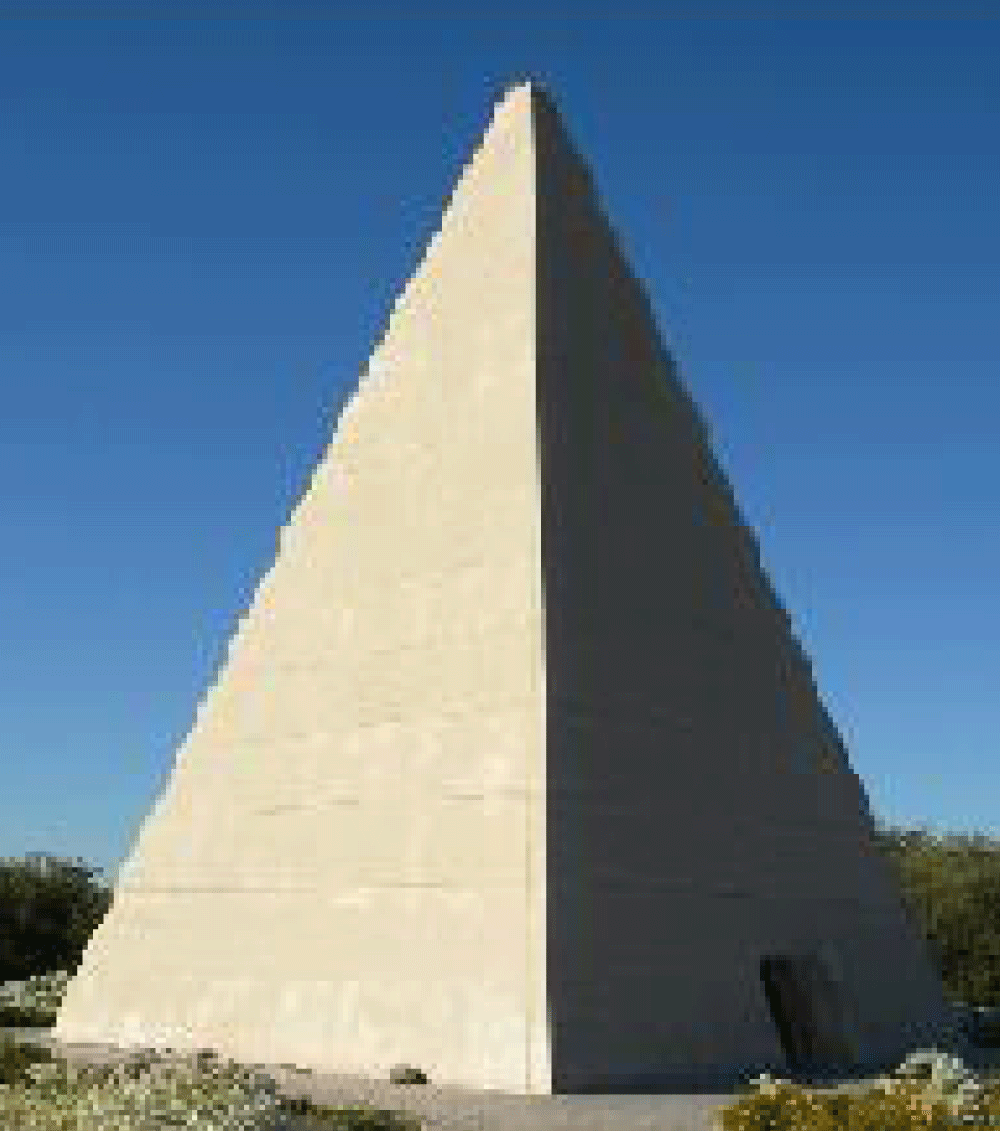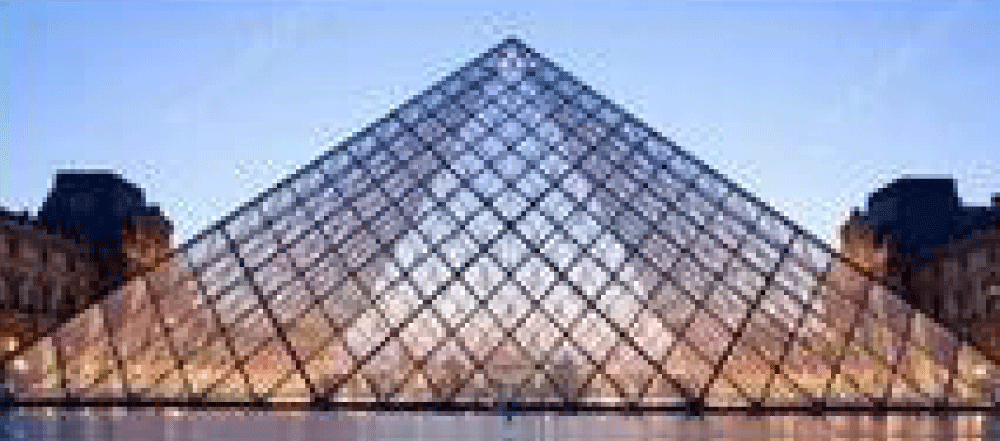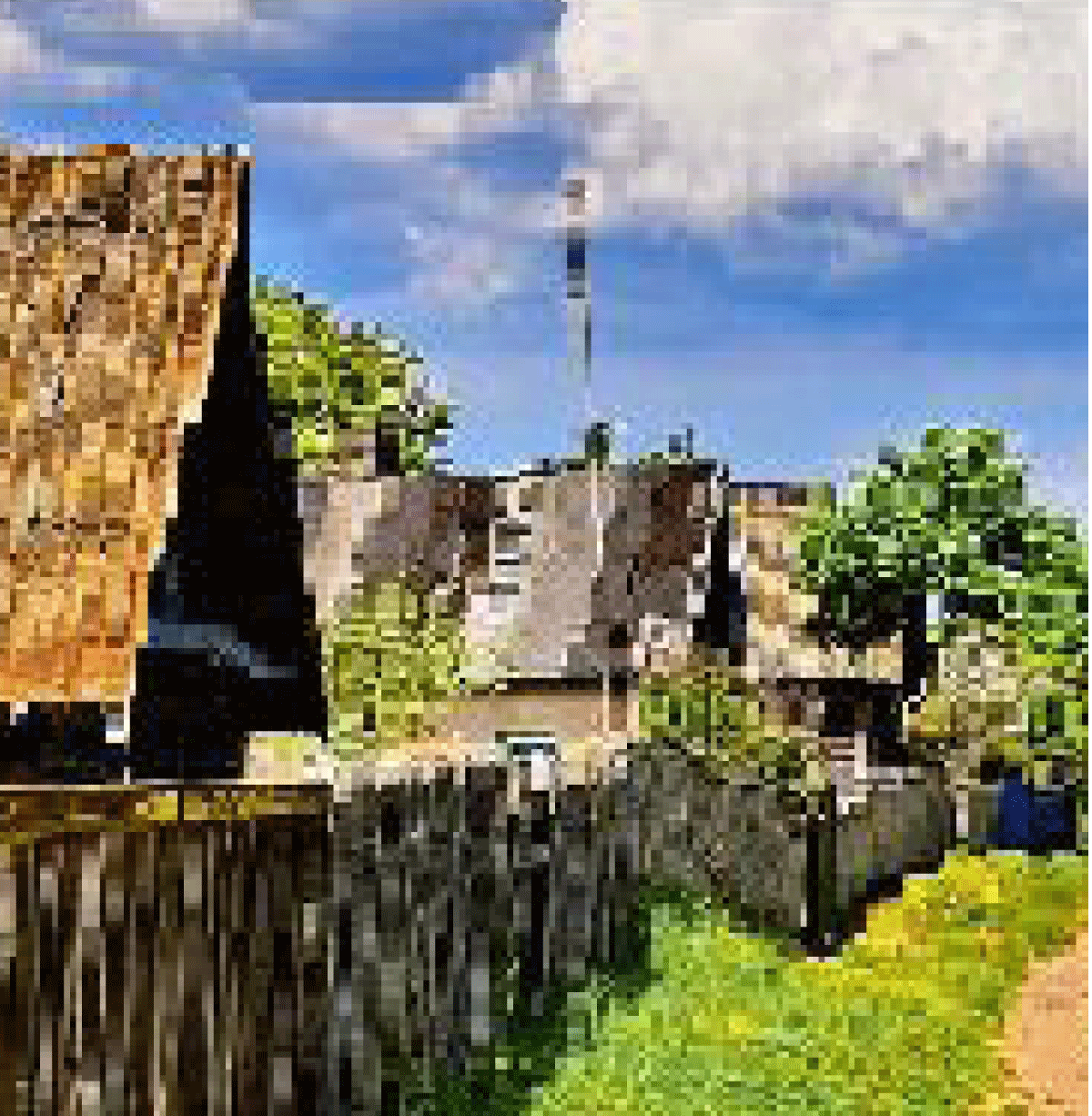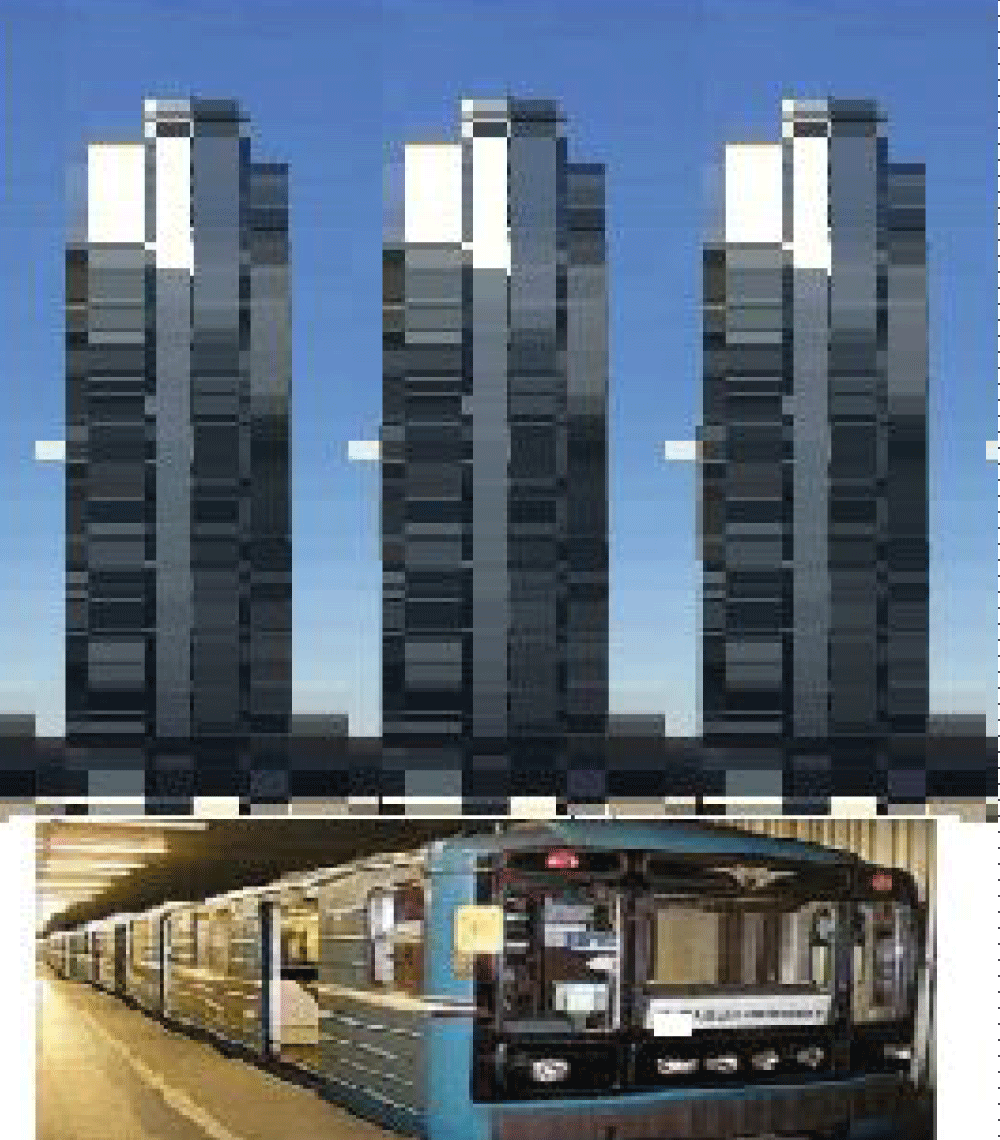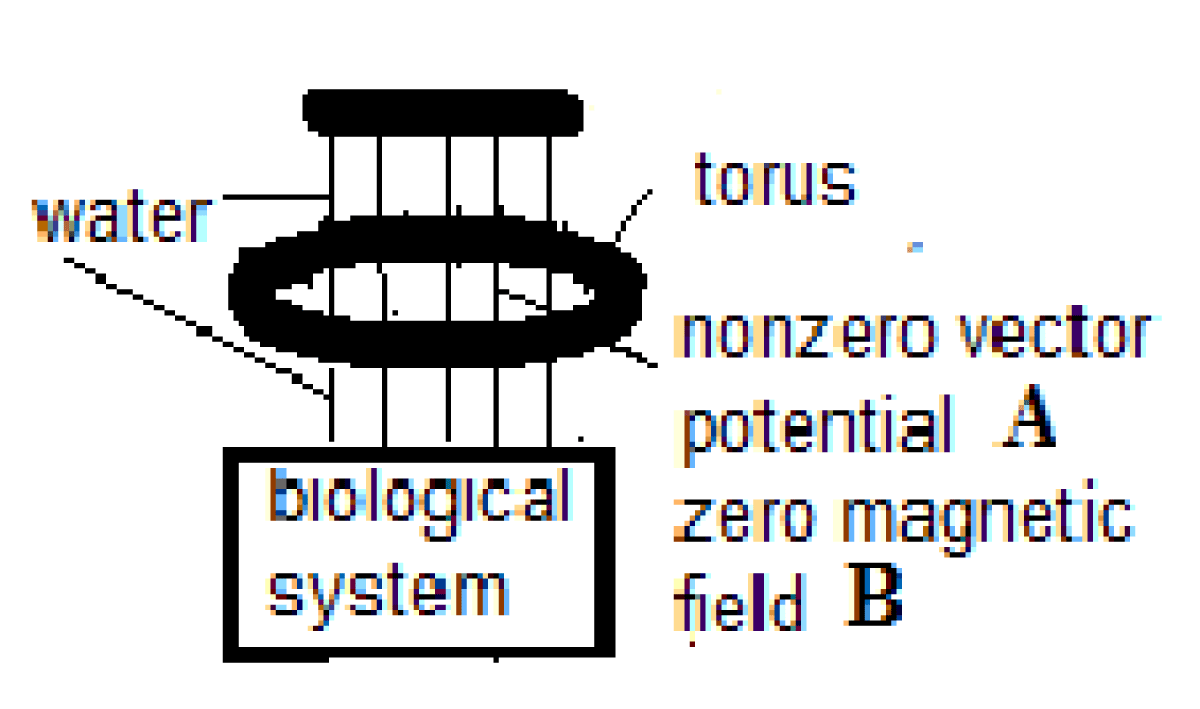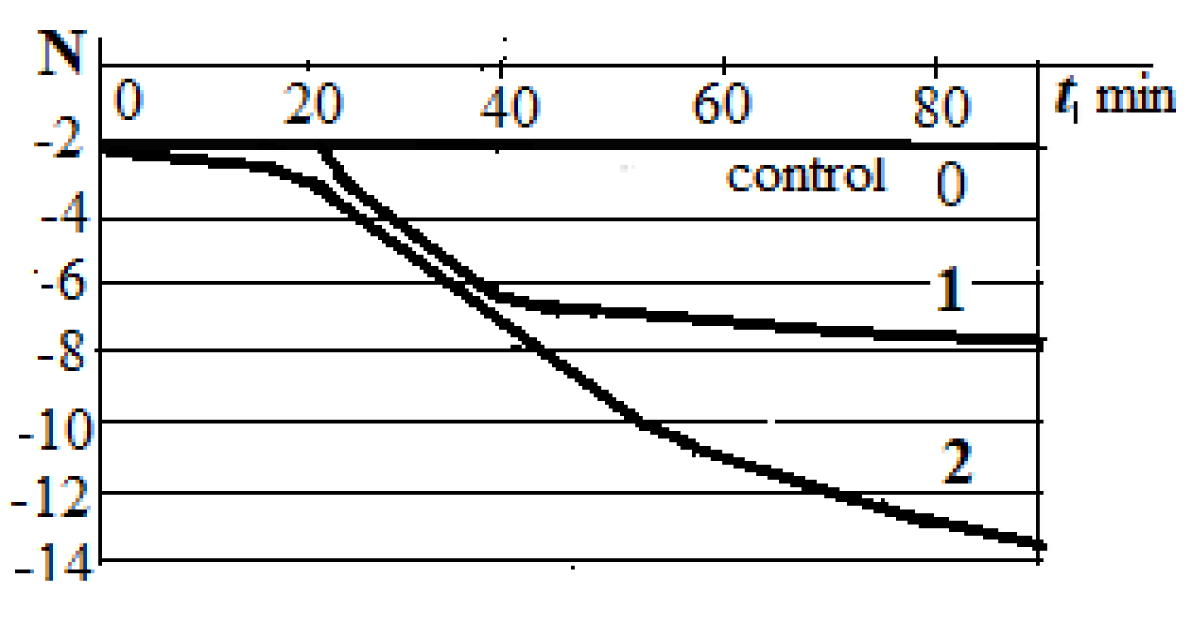More Information
Submitted: March 21, 2023 | Approved: March 31, 2023 | Published: April 03, 2023
How to cite this article: Boldyreva LB. Spin supercurrent in ecology. Int J Phys Res Appl. 2023; 6: 057-067.
DOI: 10.29328/journal.ijpra.1001052
Copyright License: © 2023 Boldyreva LB. This is an open access article distributed under the Creative Commons Attribution License, which peRmits unrestricted use, distribution, and reproduction in any medium, provided the original work is properly cited.
Spin supercurrent in ecology
Liudmila Borisovna Boldyreva*
The State University of Management (Retired) Moscow, Russian Federation
*Address for Correspondence: Liudmila Borisovna Boldyreva, The State University of Management (retired) Moscow, Russian Federation, Email: [email protected]; [email protected]
Background: This work aims to show that the process of transfer of angular momentum ‑ spin supercurrent ‑ may provide the fulfillment of the fundamental law of ecology: “Everything is connected to everything else”.
Results: The conducted investigations are based on the following properties of spin supercurrent: the equalization of the characteristics of interacting objects’ spins; dissipation-free; inertia-free (it is not accompanied by the emergence of kinetic mass); superluminal speed (there is no contradiction with Special Relativity, as Special Relativity postulates the speed limit only for an inertial process).
The spin supercurrent emerges between virtual photons having a spin and being created by quantum objects of different types: living and non-living, electrically charged and neutral, magnetized and non-magnetized, having non-zero rest mass and having zero rest mass (such as photons).
Conclusion: It is shown in this work that the properties of spin supercurrent may determine the following phenomena in ecology: the mimicry of animals and plants; the contactless (without living pathogenic microorganisms) spread of epidemics; the influence of the terrain relief on the population longevity; the use of water as information matrix; the stabilization of energy in the Earth’s core. Since the spin supercurrent possesses such properties as dissipative-free, superluminal speed, the non-electric and non-magnetic nature, it may perform interaction (quantum teleportation) of quantum objects between the Earth and Cosmic bodies. Thus, the extension of the biosphere’s border to Outer Space is possible.
The first law of ecology formulated by one of the founders of the theoretical basics of modern ecology, Barry Commoner, declares [1]: “Everything is connected to everything else”.
The objects interact with each other if they have some common property: for example, gravitational interaction emerges only between objects having mass, electric interaction emerges only between objects having electric charges, and so on. Thus, for fulfilling the first law of ecology formulated by Barry Commoner, interacting bodies (living and non-living, electrically charged and neutral, magnetized and non-magnetized, having non-zero rest mass and having zero rest mass ‑ photons) must have at least one common property. This common property is the existence of wave properties of quantum objects constituting ambient bodies.
According to [2,3], the wave properties of any quantum object are connected with the spin’s characteristics of a virtual photon created by the object [4]. The change in the spin’s characteristics of a virtual photon may be performed by the process of transfer of angular momentum. The first works introducing the process of transfer of angular momentum in descriptions of physical phenomena were works by J. C. Maxwell [5]. In hundred years, the investigation of the process of transfer of angular momentum was continued (taking into account the quantum object characteristic discovered in the 20th-century ‑ spin) by A. Borovic-Romanov [6], Yu. Bunkov [7], V. Dmitriev and I. Fomin [8]. In these investigations, the process of transfer of angular momentum is called a “spin supercurrent”.
Thus, the physical process capable to connect “all…with everything” may be spin supercurrent. The schema of the interaction of two bodies by means of spin supercurrent emerging between virtual photons created by quantum objects of the bodies is given in Figure 1.
Figure 1: The schema of the interaction of two bodies (body 1 and body 2) by means of spin supercurrent emerging between virtual photons created by quantum objects of the bodies.
It is shown in this work that the properties of spin supercurrent may determine the following phenomena in ecology:
- The mimicry of animals and plants;
- The contactless (without living pathogenic microorganisms) spread of epidemics;
- The influence of terrain relief on population longevity;
- The use of water as an information matrix;
- The possibility of the extension of the biosphere’s border to Outer Space,
- The stabilization of energy in the Earth’s core.
Let us analyze the above-mentioned phenomena in detail taking into account the properties of virtual photons.
The properties of virtual photons
In 1949, R. Feynman [4] was awarded a Nobel Prize for introducing virtual particles created by quantum objects, for the denotation of force fields in his diagrams. The properties of virtual particles depended on the interaction in which they were involved. For example, a quantum object which is a singularity in electric or magnetic fields (electric charge or/and magnetic dipole) creates a pair of oppositely charged electric particles, the so-called virtual photon, since it, like a photon, transfers electric and magnetic interactions. Like a photon, the virtual photon, has spin Sv precession with a frequency ωv determined by the energy Uq of the quantum object creating the virtual photon:
(1)
Except for precession frequency ωv, spin is characterized by the angle of deflection βv (angle between Sv and ωv) and angle of precession αv (relative to a reference line at arbitrary time t):
(2)
The angle of deflection βv is determined by the speed uq of the quantum object creating the virtual photon: , c is the speed of light. (For a photon , that is in accordance with experimental data [9]. If the energy of the quantum object (with mass mq) equals the kinetic energy, then:
(3)
From the physical point of view, the creation of a virtual particle by a quantum object may be a consequence of the interaction of the quantum object’s spin with the physical vacuum. Taking into account the action of the charge of a quantum object on the virtual photon (created by it) as on an electric dipole, and according to the properties of spin’s precession (Sedov, 1971-1972), the orientation of the precession frequency ωv of the virtual photon’s spin Sv is associated with the orientation of velocity uq of the quantum object creating this virtual photon as:
(4)
The properties of spin supercurrent
1) The value of a spin supercurrent.
The value of a spin supercurrent is determined by the characteristics of the precession of spins of the spin structures (virtual photons) between which the supercurrent arises. The example of orientation (along axis z) of a spin supercurrent (Iss)z emerging between virtual photons with spins Sv and correspondingly with precession frequencies ω1 and ω2, precession angles α1 and α2, deflection angles β1 and β2 are given in Figure 2. According to Eq. (4), in this case, virtual photons are created by positively charged quantum objects with velocity uq.
Figure 2: Schematic image of virtual photons created by positively charged quantum objects moving at velocity uq. (Iss)z is spin supercurrent along the axis z, ω1 and ω2 are precession frequencies, α1 and α2 are precession angles, β1 and β2 are deflection angles, Sv is spin, r.l. are reference lines.
The magnitude (Iss)z between those virtual photons is determined by the equation:
(5)
At crossed mutual orientation of frequencies ω1 and ω2 spin supercurrent does not emerge.
2) The equalization of characteristics of interacting virtual photons.
The following inequalities take place as a result of the action of spin supercurrent:
(6)
(7)
where and are the values of the precession angles of the virtual photons’ spins after the action of spin supercurrent; and are the values of the deflection angles of the virtual photons’ spins after the action of spin supercurrent. It follows from Eqs (2) and (6):
(8)
Where and are the precession frequencies of spins of interacting virtual photons after the action of spin supercurrent.
3) The speed of spin supercurrent.
As shown in works [6-8], a spin supercurrent may equalize the spin part of the parameter order in the quantum liquid described by a single wave function, in particular in superfluid 3He-B; consequently, the spin supercurrent must be a dissipation-free process. Due to the connection of energy with mass, spin supercurrent is an inertia-free process (it is not accompanied by the emergence of mass), and, consequently, its speed yss may be greater than the speed of light:
(9)
There is no contradiction with Special Relativity, as Special Relativity postulates the speed limit only for an inertial process [10]: “In any inertial frame of reference, light propagates isotropically, independent of the motion of its source, and the speed of light is equal to absolute constant c.”.
4) The slippage of the precession angle (phase slippage).
At a definite difference in the precession phases of the spins of interacting virtual photons, a precession phase slippage (by the value nπ, n=1,2,….) takes place. The value and sign of spin supercurrent change as well. Thus, Eq. (5) holds true in the absence of phase slippage: that is under condition , in particular, taking into account Eqs (2) and (8), under the condition:
(10)
5) The decrease in spin supercurrent under an increase in the number of interacting virtual photons.
The effectivity of the action of spin supercurrent may decrease under an increase in the number of interacting virtual photons. Let us assume, that one virtual photon with precession frequency ωx, angle of precession αx, and angle of deflection βx interacts with a great number (w) of virtual photons. If the precession frequencies of the spins of all virtual photons are aligned with ωx, then the total spin supercurrent Isum between the virtual photon with precession frequency ωx, on the one hand, and the others w virtual photons, on the other, is determined to be , where Ii is the spin supercurrent between the virtual photon with precession frequency ωx, on the one hand, and the arbitrary i-th virtual photon (from w virtual photons), on the other. Using Eq. (5), we obtain , where αi and βi are respectively the precession angle and the deflection angle of an i-th virtual photon. If all the values and signs of (αi - ax) and (βi - βx) are respectively equiprobable and w →∞, then:
(11)
6) Non-electric and non-magnetic nature.
The spin supercurrent is not an electric or magnetic process; therefore, the spin supercurrents may not be screened by electromagnetic screens.
The experiments by Paolo Bellavite and Andrea Signorine [11] demonstrate the possibility of homeopathic effect not only of solutions but also of closed ampoules containing solutions and placed in contact with the system to be regulated (human or animal). As the homeopathic effect is achieved by the action of spin supercurrent, it follows from the above-mentioned experiment that spin supercurrents may not be shielded by molecular substances as well.
7) The energy connected with spin supercurrent.
From Eqs (1)-(3) it follows that changes in the characteristics of the virtual photon’s spin may result in a change in the energy of the quantum object creating this virtual photon. Let us estimate the change in ∆Uq energy of the quantum object under the change in the value ∆βv of the deflection angle βv of spin of the virtual photon created by the object. If the energy of the quantum object (with mass mq) equals the kinetic energy, then from Eq. (3) it follows: . At the interaction of w virtual photons the total change in energy of quantum objects creating those virtual photons, according to the above-deduced formula for ∆Uq, is determined as:
(12)
where is the mass of i-th quantum object; and ∆βi are respectively the angle of deflection and the change in the angle of deflection of spin of virtual photon created by the i-th quantum object.
Thus, the action of spin supercurrent emerging between virtual photons may result in both increasing and decreasing of energy of quantum objects creating those virtual photons.
8) Aftereffect connected with spin supercurrent.
According to Eqs (6)-(8), spin supercurrent changes characteristics (angles of precession and deflection, precession frequency) of spins of interacting virtual photons. Due to the gyroscopic properties of spin, the recovery of initial characteristics of spins after the cease of action of spin supercurrent is performed with a time delay; the value of the time delay depends on the disturbance made by ambient bodies on the interacting virtual photons.
9) The constant existence of spin supercurrent in a cavity structure.
According to Eq. (4), the orientation of the spin precession frequency of the virtual photon created by a quantum object is determined by the orientation of the object’s velocity. If a quantum object constitutes an atom, then the velocity of the object may be its orbital velocity. As the mutual space arrangement of the orbits of the quantum objects that constitute the substance of a structure depends on the form of the latter, the mutual orientation of the precession frequencies of the virtual photons created by these quantum objects, due to Eq. (4), cannot be arbitrary. In particular, the precession frequencies of the spins of the virtual photons created by the quantum objects of a cavity structure may not be aligned with the same straight line. For example, r precession frequencies (ω1, ωp, ωq,…,ωr) may be oriented tangential to a ring (Figure 3). In this configuration, according to definition Eq. (5), a spin supercurrent (Iss)pr between the arbitrary p and r virtual photons will never be zero, that is,
(13)
Figure 3: An example of the ring orientation of precession frequencies ω1, ωp, ωq,…,ωr of r virtual photons created by the quantum objects that constitute the substance of a cavity structure; (Iss)pr is a spin supercurrent.
Mimicry of color and form of animals and plants
Mimicry of color: According to Eqs (1) and (8), the action of spin supercurrent may result in the equalization of energies of quantum objects:
(14)
Where Uq1 and Uq2 are energies of interacting quantum objects before the action of spin supercurrent; and are energies of interacting quantum objects after the action of spin supercurrent.
As the energies of quantum objects constituting a body determine the color of the body [12], then, according to Eq. (14), the action of spin supercurrent may change the color of the bodies between which it emerges. As spin supercurrent may emerge between the virtual photons created by quantum objects both of plants and of animals, then due to Eq. (14), the color mimicry between the plants, between animals, and between an animal and plant is possible.
Mimicry of form: According to Eqs (6)-(8), spin supercurrent may equalize respective angles of precession, angles of deflection, and precession frequencies of spins of virtual photons between which it emerges. According to Eq. (4), it means that the action of spin supercurrent can change the mutual orientation of velocities of quantum objects creating those virtual photons and, consequently, the configuration of atoms and form of bodies containing these quantum objects. Thus, spin supercurrent while transferring the angular momentum (angles of precession and deflection) transfers the body’s form as well, and, consequently, may perform the form’s mimicry of the bodies.
Examples: In Figures 4a and 4b, the color and form mimicries of plants are shown: Urtica dioica (Dioecious nettle) and Lamium album (White Dead-nettle). The latter in its leaves is extremely similar to the Dioecious nettle, and since the Dioecious nettle is protected by its burning hairs from herbivorous animals, this similarity serves as protection for the White Dead-nettle. Figure 5 demonstrates the color and form mimicries of insects: Tetraponera ophthalmica (Ant) and Myrmarachne ichneumon (Mimicking jumping spiders). Figure 6 shows an example of color and weak form mimicries of Madagascar’s Phelsuma serraticauda (Flat-tailed day gecko) to a Madagascar plant.
Figure 4: а: Urtica dioica (Dioecious nettle) (Shareslide.ru). b: Lamium album (White Dead-nettle) (Shareslide.ru).
Figure 5: Tetraponera ophthalmica (Ant) and Myrmarachne ichneumon (mimicking jumping spiders) (naurok.com.ua).
Figure 6: Phelsuma serraticauda (Flat-tailed day gecko) on a Madagascar plant. (http://photoshtab.ru).
Thus, the action of spin supercurrent must be taken into account in consideration of natural selection and the “survival” of the organisms.
The contactless (without living pathogenic micro-organisms) spread of epidemics
In order to prove that a spin supercurrent may perform contactless transmission of disease between biological systems (BS1 and BS2), let us consider a change in the energy characteristics (for example, the temperature) of BS1 at a change in the temperature of BS2 [13]. Let us assume that before of change in temperature the characteristics (frequency of precession, the angle of precession, and angle of deflection) of spins of virtual photons produced by quantum objects that constitute BS1 were equal to analogous characteristics of BS2. After a change in temperature by value ∆T (at time t = 0) the difference emerges between values of the above-mentioned characteristics of spins of virtual photons produced by quantum objects of BS1 and of virtual photons produced by quantum objects of BS2. The difference between precession frequencies ∆ω according to Eq. (1), is determined as:
(k is the Boltzmann constant). The difference ∆α between angles of precession at t = τ, according to Eq. (2), equals:
(15)
If the energy Uq of a quantum object with mass mq is equal to the kinetic energy, then, according to Eq (3), the difference ∆β between angles of deflection equals:
(16)
According to Eq. (5), spin supercurrent emerging between BS1 and BS2 at a time t = τ is determined as: . The action of the spin supercurrent minimizes the difference between precession angles and deflection angles, and from Eqs (15)-(16) it follows that the minimization is possible provided that the temperature difference between BS1, and BS2 becomes less than ∆T. It is possible that as a result of the action of spin supercurrent the temperature of BS1 is increased and the temperature of BS2 is decreased, that is, the transmission of the disease from an ill BS1 to a healthy BS2 and an inverse process, the healing of ill BS1, takes place.
The effectivity of the action of spin supercurrent between BSs is maximal at the fulfillment of condition (10), that is, at frequency resonance of precessing spins of virtual photons created by the quantum objects of considered BSs. The following experiment data may support this conclusion.
I. The investigation of a great number (~500) of identical twins showed that only nearly 40% of diseases have a genetic component though identical twins share 100 percent of their genetics. A special notation was introduced: Twin Correlation [14].
II. In 1991, Yu. Tyagotin [15] carried out the following experiment. The cells grown in the same medium (the cells containing chromosomes of normal splenocytes of mice were used) were divided into two parts. After that one of the parts was placed in noxious conditions. As a result, not only the cells of that part perished, but also the cells of other parts that were in favorable conditions perished as well.
III. The author of this work knows the following case: two nine years old twins had an appendicitis attack an hour apart and both boys were subjected to an urgent operation [13].
The influence of terrain relief on the population longevity
The value of spin supercurrent emerging between virtual photons depends on the mutual configuration of the quantum objects that created those virtual photons: for example, according to property 9 of spin supercurrent (Eq. [13] and Figure 3), the spin supercurrent will exist constantly in a cavity structure. Consequently, according to Eq. (12), energy generation may take place in cavity structures. For example, in 1952, Czech researcher, K. Drbal discovered the possibility of a pyramid (cavity structure) “maintaining razor blades and straight razors sharp” without an auxiliary source of energy; he was granted a patent for this discovery [16].
Let us consider the energy properties of some types of the Earth’s landscape. In the landscape shown in Figure 7 the space between mountains, which is actually a cavity structure, will be filled with spin supercurrent, and, consequently, with the energy associated with the current. If to denote the energy of landscape by Wl, then according to Eqs (12)-(13), the following holds for the mountain slope:
(17)
Figure 7: Caucasus mountains.
The plain landscape (Figure 8) is not characterized by similar energy; in this case
(18)
Figure 8: Russian steppe.
From the comparison of Eqs (17) and (18) it follows that people living between mountains or on mountain slopes and people living in plain-like areas must have different characteristics and diseases. Let us analyze the influence of terrain relief on the population longevity in the region.
Michel Poulain and Giovanni Pes in the early 21st century identified the so-called blue zones in which there are the greatest number of long-livers (age greater than 90) [17]. So far, the following “Blue Zones” have been identified around the world: a mountainous region of Sardinia in Italy; Okinawa in Japan; the Nicoya peninsula in Costa Rica; the island of Ikaria in Greece [18].
Figures 9-12 contain small photos of terrain relief of the regions constituting “Blue Zones”. As follows from these photos, most buildings are located on maintained slopes. Consequently, as follows from Eq. (17), “Blue Zones” may be filled with energy.
Figure 9: Sardinia, Italy.
Figure 10: Okinawa in Japan.
Figure 11: Nicoya peninsula in Costa Rica.
Figure 12: Ikaria in Greece.
Let us consider also the zones in which the average life expectancy has the minimum value in the world (~ 25 years less than in “Blue Zones” [19]), for example, Somalia and the Republic of Ivory Coast (their terrain reliefs are shown in Figures 13-14). There exist other zones in the world with the same average life expectancy and analogous terrain relief of regions. But the chosen zones are distinct from others by the presence of the ocean, similar to regions of “Blue Zones”. One of the distinctions between regions of “Blue Zones” (Figures 9-12) and those presented in Figures 13-14 is their relief. In the latter case, the landscape is plain and consequently, in accordance with Eq. (18), is not characterized by energy connected with the spin supercurrent. It may be one of the reasons for the low average life expectancy of the population.
Figure 13: Somalia.
Figure 14: Republic of Ivory Coast.
Thus, the region’s relief type (plain or mountain) may influence the population’s average life expectancy in this region.
It is possible that the longevity in mountains was one of the reasons of creating pyramids from ancient times (for example, in Egypt, Figure 15, and in Russia, Figure 16) until the present time (for example, in Russia, Figure 17, and in France, Figure 18). The possibility of a change in energy properties of space near pyramids was proved in experiments by American scientist J. Parr. In 1977–1987 J. Parr discovered a region near a pyramid that has the property of shielding various fields (Parr, 1980-1981) [20]; he called this region a “bubble”. Parr used to place energy sources that emitted various fields (gamma rays and radio frequency sources) inside a pyramid and measured the extent the bubble shielded or blocked them. He has demonstrated in thousands of experimental runs that this bubble is indeed blocking off all known energy fields and influencing the weight of ambient bodies.
Figure 15: The Giza Pyramids, Egypt XXVI–XXIII BC. (https://commons.wikimedia.org).
Figure 16: Pyramids. Russia, Kola peninsula, age>9000 years. (mysteriesrunsolved.com).
Figure 17: Pyramid in Russia, near Moscow, XX c.
Figure 18: Pyramid in France, Paris, Louver museum, XX c.
Social aspect
From the considered energy concept, Eqs (17) and (18), it follows that there is no doubt about the existence of differences in some social aspects (diseases, character) of the people living in small houses in small villages, Figure 19, and people living in cities with many-floor buildings and underground railway, Figure 20.
Figure 19: A village.
Figure 20: City buildings with underground railway.
According to property 6 of spin supercurrent, it is not shielded by electromagnetic and molecular screens. Therefore, every human in a city is exposed to the action of spin supercurrents continuously radiated by virtual photons created by quantum objects of ambient buildings and, possibly, of underground tunnels which are cavity structures, see Eq. (13).
It should be noted that the considerable density of population in a city means the considerable density of virtual photons created by quantum objects constituting a city’s population. According to property 5 of spin supercurrent, Eq. (11), the total spin supercurrent emerging between a great number of virtual photons may be negligible. As a result, some people may feel loneliness and helplessness in a city stronger than in a village.
The “Memory” of water
Water covers about 71% of the Earth’s surface and consequently, the influence of water on ecology is very strong. The water may be used not only as a food component or as a transport way but as an information matrix as well. The possibility of using water as an information matrix was proved by the following experimental data.
I. The preparation of homeopathic medicine is accomplished by the dissolution of remedies in water. Analysis of the peculiarities of action of homeopathic remedies on biological systems discovered an analogy between these peculiarities and properties of spin supercurrents [21].
II. It follows from some experiments [22] that treating diseases related to free radicals may be accomplished both by direct use of electromagnetic 644 nm radiation (red color) and by use of a water information matrix (the water irradiated by electromagnetic 644 nm oscillations). Moreover, it was discovered experimentally that water irradiated with 644 nm light can be used not only for curative treatment but also as a preventive tool against the diseases related to free radicals. As in the case of homeopathic medicine, the experimentally obtained results using electromagnetic 644 nm radiation may be explained by the action of spin supercurrent [3].
III. It is shown (Azeemi, 2009) that the action of field-free magnetic vector potential A (the potential is determined by magnetic field B: B=curlA=0) on the characteristics of a BS may be performed in two ways: the “direct” action and the “indirect” action with the use of intermediate medium ‑ water. The schema of the device for creating a field-free magnetic vector potential is shown in Figure 21. The device consists of permanent magnets of 150 mT magnetic induction and is arranged in a form of a torus. The field-free magnetic vector potential with the maximum value while magnetic field B=0, is created inside the torus.
Figure 21: Experimental setup. The water passes through the torus center, where magnetic field B = 0 and vector potential A ≠ 0, to a biological system.
The action of field-free magnetic vector potential on carbohydrate metabolism in yeast plants was investigated. The СО2 emission rate measurements started 30 minutes after the preparation of yeast’s suspension and this was at room temperature. In the case of the “direct” action, after 20 minutes of gas emission rate measurement, the cuvette with yeast’s suspension was permanently affected for 60 minutes with field-free magnetic vector potential. After the end of the action of this potential, the gas emission rate did not recover to the initial magnitude for at least 120 minutes. The deviations of measured values of gas emission from the control quantities (without the use of magnetic vector potential - curve 0) are given in Figure 22, curve 1.
Figure 22: Dependence of СО2 emission rate (in relative units N) against time t. Curve 0 is the control measurement value without the use of magnetic vector potential. Curve 1 shows the measured values of СО2 emission rate in case of “direct” action of the field-free magnetic vector potential. Curve 2 shows the measured values of СО2 emission rate in case of “indirect” action of the field-free magnetic vector potential.
In the case of the “indirect” action, the initially pure water was at first affected with field-free magnetic vector potential, after which this water was used for the production of the yeast’s suspension. The technology of measurement of the decrease in the gas emission in this portion of yeasts is similar to that used in the studies of the “direct” action, the results are shown in Figure 22, curve 2.
The small dependence, in the above-considered experiments, of results on the type of influence (direct or “indirect”) of the biologically active substance on BS indicates that both types of influence are performed by the same physical process.
In 1959, the possibility of a field-free magnetic vector potential to directly influence the characteristics of quantum objects was considered by Y. Aharonov and D. Bohm [23]. Subsequently, a great number of experiments have been conducted which showed that the characteristics may be wave properties of quantum objects [24]. According to [3,25], the wave properties of any quantum object are connected with the spin’s characteristics of a virtual photon created by the object. The change in the spin’s characteristics of a virtual photon may be performed by the process of transfer of angular momentum - by spin supercurrent.
The theoretical aspect of water’s “memory”
In all considered examples, the water demonstrated the ability to store information and then translate this information to BS. This ability may be connected, at first, with the existence of property 8 of spin supercurrent (aftereffect) and, secondly, with the existence in the water of stable states differing in some characteristics of water’s quantum objects. The fact that spin supercurrent influences information properties of water allows us to suppose that these characteristics are the characteristics of spins of virtual photons created by water’s quantum objects, or, according to Eq. (4), they may be characteristics of the water’s quantum objects.
The experimental investigation of water properties conducted by Pershin [26] shows that the stable states differing in characteristics of quantum objects’ spins exist in water. He showed that the two-atoms hydrogen (for example, in molecule Н2О) is a mix of two allotropic forms — ortohydrogen and parahydrogen. According to quantum mechanics, ortohydrogen protons’ spins are oriented along one direction; parahydrogen protons’ spins are oriented in opposite directions. The ortho‑ and para‑hydrogens have different heat capacities, thermal conductivity, melting point, steam elasticity, and magnetic properties; the energy of parahydrogen is less than the energy of ortohydrogen.
According to Eq. (4), the spin supercurrent influencing spins of virtual photons created by quantum objects of water also influences the velocity and, due to spin-orbital interaction, spins of these quantum objects.
The extension of the biosphere’s border to outer space
The appearance of sputniks and space stations in Outer Space means the extension of the biosphere’s border to Outer Space. The experiments are conducted on the investigation of quantum teleportation of quantum objects between the Earth and sputniks. In 2017 Ji-Gang Ren, et al. [27] organized the first quantum teleportation (quantum correlation) of an independent single-photon from a ground observatory to a low Earth orbit satellite - through an up-link channel (sputnik channel) at a distance of up to 1400 km. It is remarkable that the Nobel Prize in Physics 2022 was awarded jointly to Alain Aspect, John F. Clauser, and Anton Zeilinger “for experiments with entangled photons, establishing the violation of Bell inequalities and pioneering quantum information science” [28-31].
The quantum correlations have properties similar to the properties of spin supercurrent: independence of the type of rest mass (zero or nonzero) of interacting quantum objects, dissipation-free, inertia-free, nonelectric, nonmagnetic, the possibility of transfer of angular momentum with superluminal speed [32]. This similarity means that quantum correlations are accomplished by spin supercurrent [25].
Supporting energetic balance on the Earth
Many centuries of investigations by numerous researchers show that though the climate in some regions of the Earth is changed radically (for example, the melting of ice or icing) in general the Earth was comfortable for mankind and the population of the Earth is constantly increasing. The main reason for this is the heat generated by the Earth. This generation is not explained by nuclear reactions but can be explained by the cold transmutation of nuclei in the Earth’s core as in a reactor. Let us consider some arguments in favor of this supposition.
1) Natural oil is discovered in the Earth’s crust, at the same time the investigations show that natural oil does not emerge at high temperatures but emerges as a result of electrical discharge in a water solution with calcined soda, that is as a result of cold transmutation of nuclei that proves the existence of such process in the Earth’s crust or in the Earth’s core [33].
2) The interaction of hydrocarbon plasma with nickel target (cold transmutation of nuclei) results in the appearance, in general, of the following elements: silicious, aluminum, calcium, and magnesium [34-36].
It should be noted that the Earth’s core consists mainly of silicious, iron, and nickel [37], thus a cold transmutation of nuclei may emerge in the Earth’s core as in a reactor with a nickel target. The fact that 49% of the Earth’s crust consists of silicious, aluminum, calcium, magnesium, and iron [38] indicates that those elements may be the products of the cold transmutation of nuclei in the Earth’s core.
There is no doubt that the hypothesis of the generation of the Earth’s heat by cold transmutation of nuclei in the Earth’s core is more acceptable than the contemporary theory of saving the Earth’s heat by hard Earth’s crust [39].
As it follows from work [40,41], cold transmutation of nuclei in the Earth’s core may emerge as a result of the action of spin supercurrent between virtual photons created by quantum objects constituting the Earth’s core. It must be taken into account that the action of spin supercurrent, according to Eq. (12), may both increase and decrease the energy of objects where it emerges. Consequently, the action of spin supercurrent may take part in the stabilization of the energy of the Earth.
The spin supercurrent transfers angular momentum (angles of precession and deflection) between spins of virtual photons created by quantum objects constituting all bodies. This property of spin supercurrent may cause such ecological phenomena as the mimicry of color and form of plants and animals, and the contactless (without living pathogenic microorganisms) spread of epidemics.
As spin supercurrent emerging between virtual photons created by quantum objects of bodies in the terrain area influences the energy properties of the area and the influence depends on the terrain relief, the characters and diseases of people must depend on the terrain relief where they are living.
The action of spin supercurrent on molecules of water may cause the transition between the stable states of water connected with ortho or para-hydrogen. Thus, the “memory” of water may emerge.
The spin supercurrent possessing such properties as dissipation-free, superluminal speed, and the non-electric and non-magnetic nature may perform interaction (quantum teleportation) of quantum objects between the Earth and Cosmic bodies. Thus, the extension of the biosphere’s border to Outer Space is possible.
As the action of spin supercurrent may cause cold transmutation of nuclei, the spin supercurrent may influence energy processes in the Earth’s crust and Earth’s core.
It is shown in this work that many phenomena in ecology may be accomplished by spin supercurrent. The spin supercurrent transfers angular momentum between spins of virtual photons created by quantum objects of different types: living and non-living, electrically charged and neutral, magnetized and non-magnetized, having non-zero rest mass and having zero rest mass (such as photons); that is, between virtual photons of quantum objects constituting any bodies on the Earth and in Outer Space.
The action of spin supercurrent must be taken into account when the following phenomena in ecology are analyzed: the mimicry of color and form of plants and animals; the contactless (without living pathogenic microorganisms) spread of epidemics; the influence of the terrain relief on the population longevity; the possibility of using water as an information matrix; the generation of energy in the Earth’s core. The spin supercurrent possesses such properties as dissipative-free, superluminal speed, the non-electric and non-magnetic nature. Consequently, it may perform interaction (quantum teleportation) of quantum objects between the Earth and Cosmic bodies; thus, the extension of the biosphere’s border to Outer Space is possible.
Declarations
Author’s contribution: “Entire manuscript.”
- Commoner B. Fallout and Water Pollution–Parallel Cases. Scientist and Citizen. 1964; 7–2:2. Doi:10.1080/21551278.1964.9958599.
- Boldyreva L. Theory of Virtual Particles as an Alternative to Special Relativity. International Journal of Physics. 2017; 5(4): 141-146. http://pubs.sciepub.com/ijp/5/4/6/.
- Boldyreva L. A theory of spin vortices in a physical vacuum consisting of quantum oscillators. Cambridge Scholars Publishing. 2021; https://www.cambridgescholars.com/product/978-1-5275-6455-8.
- Feynman R. Space-time approach to quantum electrodynamics. Phys Rev. 1949; 76: 769-789.
- Maxwell J. On Physical Lines of Force. Part II: The Theory of Molecular Vortices Applied to Electric Currents. Philosophical Magazine. 1861; 21 & 23, Series 4.
- Borovik-Romanov AS, Bunkov YM, Dmitriev VV, Mukharskiy YM, Sergatskov DA. Investigation of spin supercurrents in 3He-B. Phys Rev Lett. 1989 Apr 3;62(14):1631-1634. doi: 10.1103/PhysRevLett.62.1631. PMID: 10039724.
- Bunkov YM. Spin superfluidity and coherent spin precession. J Phys Condens Matter. 2009 Apr 22;21(16):164201. doi: 10.1088/0953-8984/21/16/164201. Epub 2009 Mar 31. PMID: 21825381.
- Dmitriev VV, Fomin IA. Homogeneously precessing domain in (3)He-B: formation and properties. J Phys Condens Matter. 2009 Apr 22;21(16):164202. doi: 10.1088/0953-8984/21/16/164202. Epub 2009 Mar 31. PMID: 21825382.
- Weber M, Kelvin L. Three photon annihilations of Positrons and Positronium in Solids with Two Detectors in Coincidence. Radiation Physics and Chemistry. 2000; 58(5-6):749-753.
- Born M. Einstein’s Theory of Relativity. Dover Publications, New York. 1962.
- Bellavite P, Signorini A. Emerging Science of Homeopathy. 6-9. Berkeley, California: North Atlantic Books. 2002.
- Wichmann E. Quantum Physics. Berkeley physics course, v. IV, New York: McGraw-Hill Book Company. 1971.
- Boldyreva L. Disease Transmission by Spin Supercurrent. Medical research archiver, 2019; 7(issue 10): 3-6.
- Lakhani CM, Tierney BT, Manrai AK, Yang J, Visscher PM, Patel CJ. Repurposing large health insurance claims data to estimate genetic and environmental contributions in 560 phenotypes. Nat Genet. 2019 Feb;51(2):327-334. doi: 10.1038/s41588-018-0313-7. Epub 2019 Jan 14. Erratum in: Nat Genet. 2019 Apr;51(4):764-765. PMID: 30643253; PMCID: PMC6358510.
- Tyagotin Y. Communication delivered at the Transregional Scientific Conference “Problems of Biofield” A.S. Popov Scientific and Technical Society, Rostov-Yaroslavsky, Russia, (in Russian). 1993.
- Drbal K. Method of Maintaining Razor Blades and the Shape of Straight Razors. Republic of Czechoslovakia. Office for Patents and Inventions, Patent File Number 91304, Patent valid from 1 April, 1952. Published (15 August 1959).
- Poulain M, Pes GM, Grasland C, Carru C, Ferrucci L, Baggio G, Franceschi C, Deiana L. Identification of a geographic area characterized by extreme longevity in the Sardinia island: the AKEA study. Exp Gerontol. 2004 Sep;39(9):1423-9. doi: 10.1016/j.exger.2004.06.016. PMID: 15489066.
- Poulain M, Herm A, Pes G. The Blue Zones: areas of exceptional longevity around the world. Vienna Yearbook of Population Research. 2013; 11: 87-108.
- Tyulyagin S. Ranking of the world countries by average life expectancy in 2020. 2020; https://www.tyulyagin.ru/ratings/rejting-stran-mira-po-prodolzhitelnosti-zhizni.html#2.
- Parr J. Tests Prove Pyramid Affects Gamma Rays. Pyramid Guide Journal. 1980-81; 47-53.
- Boldyreva LB. An analogy between effects of ultra-low doses of biologically active substances on biological objects and properties of spin supercurrents in superfluid 3He-B. Homeopathy. 2011 Jul;100(3):187-93. doi: 10.1016/j.homp.2010.08.007. PMID: 21784337.
- Azeemi S, Raza M, Yasinzai M. Short Review Effect of Visible Range Radiations (Colours) On Superoxide Disismutasi and Immune System. Sci Int (Lahore). 2013; 25(2): 213-214. ISSN 1013-5316; CODEN: SINTE 8 213.
- Aharonov Y, Bohm D. Significance of Electromagnetic Potentials in Quantum Theory. Phys Rev. 1959; 115: 485-491.
- Chambers R. Shift of an Electron Interference Pattern by Enclosed Magnetic Flux. Phys Rev Lett. 1960; 5(1): 3-5.
- Boldyreva L. Quantum Correlations–Spin Supercurrents. International Journal of Quantum Information. 2014; 12(1): 1450007.
- Pershin S. Two Liquid Water. Physics of Wave Phenomena. 2005; 13(4): 192-208.
- Ren JG, Xu P, Yong HL, Zhang L, Liao SK, Yin J, Liu WY, Cai WQ, Yang M, Li L, Yang KX, Han X, Yao YQ, Li J, Wu HY, Wan S, Liu L, Liu DQ, Kuang YW, He ZP, Shang P, Guo C, Zheng RH, Tian K, Zhu ZC, Liu NL, Lu CY, Shu R, Chen YA, Peng CZ, Wang JY, Pan JW. Ground-to-satellite quantum teleportation. Nature. 2017 Sep 7;549(7670):70-73. doi: 10.1038/nature23675. Epub 2017 Aug 9. PMID: 28825708.
- Aspect A. Bell's inequality test: more ideal than ever. Nature. 1999; 398: 189–190. https://doi.org/10.1038/18296.
- Aspect A. From Einstein’s doubts to quantum technologies: non-locality a fruitful image. Nobel Lecture. 2022. www.nobelprize.
- Clauser J. Bell’s Theorem, Bell Inequalities, and the “Probability Normalization Loophole”. In book: Quantum [Un] Speakables II. 2016; 451-484. DOI:10.1007/978-3-319-38987-5_28.
- Zelinger A. Quantum teleportation, onwards and upwards. Nature Physics. 2018; 14: 3-4.
- Scarani V, Titel W, Zbinden H,Gisin N. The speed of quantum information and the preferred frame: Analysis of experimental data. Phys. Let. A. 2000; 276(1-4): 1-7.
- Tarasenko G. Dynamo of Earth and its role in formation of oil. Industrial Communication. www.promved.ru (in Russian). 2022.
- Klimov A. Energy Release and Transmutation of Chemical Elements in Cold Heterogeneous Plasmoids. J Condensed Matter Nucl. Sci. 2016; 19:145-155. www.iscmns.org/CMNS/JCMNS-Vol19.pdf.
- Parchomov A. Nickel-hydrogen reactors: Heat generation, isotopic and elemental composition of fuel. International Journal of Unconventional Science. 2019; 23-24(7): 139-141.
- Lochak G, Urutskoev L. Low-energy nuclear reactions and the leptonic monopole. Fondation Louis de Broglie, Paris, France, RECOM. 2021; https://lenr-canr.org/acrobat/LochakGlowenergyn.pdf.
- Anderson L. Chemical Composition of the Mantle. Proceedings of the fourteenth Lunar and Planetary Science Conference, part I. Journal of Geophysical Research. 1983; 88: B41-B52.
- Kring D. Composition of Earth's continental crust as inferred from the compositions of impact melt sheets. Lunar and Planetary Science XXVIII. 1996; 1084.
- Kruglinski S. Journey to the Center of the Earth. Discover. 2007; 28(issue 6): 54-56.
- Boldyreva L. (2021). Spin Supercurrent as a “Strange” Radiation in Low-Energy Nuclear Reactions. International Journal of Physics. 9(6): 280-285. http://pubs.sciepub.com/ijp/9/6/4 Published by Science and Education Publishing DOI:10.12691/ijp-9-6-4.
- Trukhan E. Impact of weak electro-magnetic fields on biological activity of water phase. Computer Studies and Simulation. 2009; 1(1): 101-108 (in Russian).

